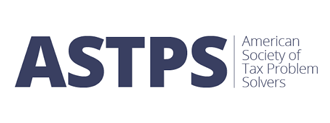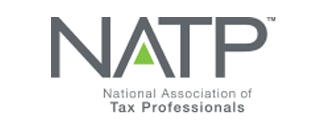I Received a CP2000 Notice. What Should I Do?
7066766659 • January 13, 2025
January 13, 2025

Have you recently received a CP2000 letter from the IRS? This notice indicates potential discrepancies between the income you reported and the IRS records. Remember, it's not a bill, but rather a proposal to adjust your tax return.
Here’s a step-by-step guide on what to do if you've received a CP2000 letter:
Step 1: Stay Calm and Review the Letter Thoroughly
Receiving a CP2000 notice is a standard communication from the IRS. Stay calm and thoroughly review the letter, paying close attention to the tax year and specific discrepancies outlined.
Step 2: Verify the Information
Compare the CP2000 notice with your tax return. Check for any mistakes and ensure that all your income, deductions, and credits were accurately reported.
Step 3: Respond Within the Specified Timeframe
The IRS provides a specific timeframe for your response. Meeting this deadline is crucial to avoid further complications. Typically, you’ll have 30 days from the date of the notice to respond. If you need more time, contact the IRS and request an extension.
Step 4: Organize Supporting Documentation
Gather all relevant documents that support your position, including W-2s, 1099s, receipts, and any other records that verify your reported income and deductions. Organize them neatly for a clear and compelling case.
Step 5: Craft a Clear Response
Write a clear and concise response to the CP2000 notice. Acknowledge the discrepancies, provide explanations, and attach any supporting documentation. If you agree with the proposed changes, you can simply sign the response and return it.
Step 6: Seek Professional Assistance
Dealing with IRS notices can be complex, and seeking professional guidance can make a significant difference. At Advantage Tax Relief, we specialize in assisting individuals and businesses facing tax challenges. Our experts can review your situation, provide tailored advice, and ensure that your response aligns with IRS guidelines.
Receiving a CP2000 notice can be intimidating, but remember, it’s a standard procedure. By following these steps and getting professional help from Advantage Tax Relief, you can effectively address the situation and take the first step towards a better financial future.
Take a step towards a brighter financial future and
Call Advantage Tax Relief at 630-773-3200 and schedule a risk-free consultation today!


October 1, 2025
It seems like natural disasters such as hurricanes, floods, earthquakes, wild fires, and tornados are happening all the time and just about everywhere. Climate change also seems to be making these disasters more deadly and more destructive. Many people do step up to help survivors with needed financial donations. The only thing worse than the disasters themselves are the scammers that exploit these situations for financial gain at the expense of hard working and well-i ntentioned survivors and donors. Like yourself! Scams can take the form of fake charities and impostors posing as legitimate organizations or government agencies. Common scams typically entail vague appeals for donations without details, fake websites with names like real charities and caller ID tricks to appear legitimate. Several warnings signs of these scammers are: 1) pressure to give immediately, often preying on your emotions and not logic 2) a thank-you for a previous donation you don’t recall making 3) a request for payment by cash, gift card or wire transfer. The last are scammers’ favored payment methods because the money is easy to access, difficult to trace and almost impossible to cancel. A legitimate charity will welcome your donation whenever you choose to make it and by whatever means you choose. A great way to verify their legitimacy is to use the IRS Tax Exempt Organization Search tool at https://apps.irs.gov/app/eos/. Additionally, clients should always ask for a receipt and then check their bank or credit card statements to ensure the donation amount is accurate. If you think you were a victim of a suspected scam, you can and should report them to the Federal Trade Commission at https://reportfraud.ftc.gov/. How Advantage Tax Relief Can Assist You At Advantage Tax Relief, based in Itasca, IL, we have over a decade of experience helping individuals and businesses resolve tax issues. Our team specializes in offering personalized tax relief and tax resolution solutions tailored to your unique needs. We will work with you to assess your situation and explore your options, whether it’s an Offer in Compromise, installment agreements, or other strategies. Our experience allows us to identify the best path forward to ease your tax burden and guide you toward financial freedom. If you're facing tax debt, don't wait. Advantage Tax Relief is here to assist you with effective, professional help. Call Advantage Tax Relief today at 630-773-3200 to schedule a consultation and take the first step toward resolving your tax issues.

August 29, 2025
First, working overtime does not mean you are getting an automatic increase in your take-home pay because it is not going to be taxed. That is not what is going to happen. The tax savings will be in the form of a tax deduction when you file your Federal tax return the following year. There will be no immediate impact. Second, it only applies for Federal income taxes. It does not include State, Social Security or Medicare taxes. Third, it also only applies to the overtime premium and within certain deduction and wage limits. You can only deduct the pay that exceeds your regular rate of pay. The 'half' portion of 'time-and-a-half' compensation. For example, say you make $20 per hour and work 5 hours of overtime that week at time-and-a-half. The deduction would the Federal tax on $50 of premium pay. ($20 divided by 2 times 5 hours) Finally, the maximum annual deduction is $12,500 for single filers and $25,000 for joint filers. The deduction phases out for taxpayers with modified adjusted gross income over $150,000 (or $300,000 for joint filers).



